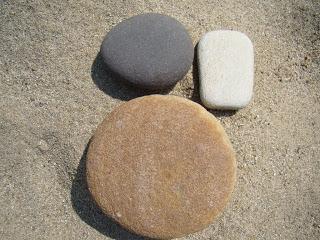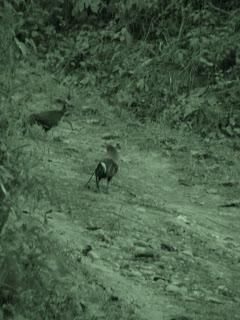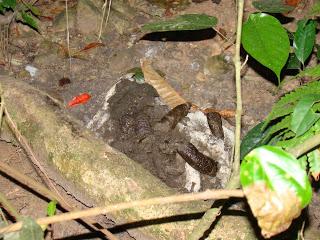Just now, I thought of this post: to put down on paper things that can make life simpler in the field. The post is based on an assumption that one has to cook one's own food using firewood and that whats on the menu is whats available. Here, I might have lost more than half my audience, the other half may read along!
- A sharp knife/Dao/Kukhri/Katti – This is very essential to chop firewood. I usually don't carry one, since even on the check-in baggage it doesn't look convincingly harmless. Here, I have borrowed someone's dao.
- Sambar powder – This one is a panacea for all kinds of hunger; an occassional sambar, potato fry, any curry, actually, it can add flavour to any food. My mom makes this and packs it for me. MTR is a good backup too.
- Pickle/any podis/chatnis – These are great to have with just rice too. Never tried rice and pickle as main course at home but here it is sumptous with fresh onions. I also feel that I am bringing a small part of home with me here! Pickles are good for my Andhra blood too!
- A small knife – Here, the Adis use a Yoxik, in this particular village it is called Chigdo, photo below. This is very useful, for it is difficult, dangerous and funny too, to cut veggies with a big knife.
- A peeler/grater or a small pestle – This one's usefulness I can't describe enough. Ginger-garlic paste, dry fish chutney, peeling potatoes, these are only few uses of this contraption. Do carry one.
- Instant coffee powder – Its nice to wake up and smell firewood burning followed by the smell of coffee. Its also useful to make friends in a remote village. That way you always have something to offer. I've even got a friend here who is now addicted to it, he comes here every morning for a steaming cup of coffee.
- Radio – Very useful, works without electricity which may often be the case. But beware of Chinese channels!
- Umbrella and raincoat – Here in Upper Siang, it could rain anytime of the year, even while 'mine truly' is reading this.
- Inland letters – I've written several letters from field. Can't recieve any though, seems it may take even a year or more for a letter to get to Bomdo!
- Lastly, packets of 'Puliyogare, Bisibele bath, Sambar' pastes are very handy. They taste nothing like home food but are tangy enought to fill your belly.
I am not saying that these are the only things to carry or that these are the more important ones. There's also medicines, books to read, gum boots, several pairs of underwear and socks, woolen thermals, etc. But these are the more obvious things one needs to take to field. Listed above are things I've learnt to carry since I miss them when I don't. If you think you also have such a list and most items don't match the ones mentioned here, please post them and drop a link.
 since February-end/March is the beginning of the cultivation cycle and everyone is busy. To top that, the day I landed here, there was some festival, called 'Mithun' puja, when Mithuns are slaughtered and meat distributed among the clans. If they talk to any outsiders, referred to as 'Ayings' here, their Mithuns and pigs may get killed by wild animals. I could immediately see the connection here. And one last detail, its raining cats and dogs here, in February that too!
since February-end/March is the beginning of the cultivation cycle and everyone is busy. To top that, the day I landed here, there was some festival, called 'Mithun' puja, when Mithuns are slaughtered and meat distributed among the clans. If they talk to any outsiders, referred to as 'Ayings' here, their Mithuns and pigs may get killed by wild animals. I could immediately see the connection here. And one last detail, its raining cats and dogs here, in February that too! 





